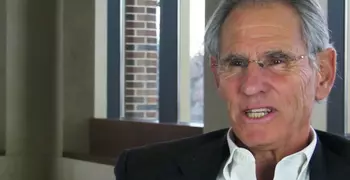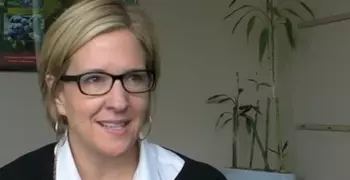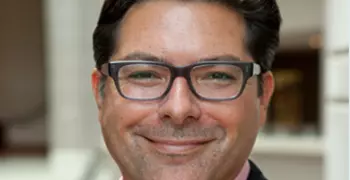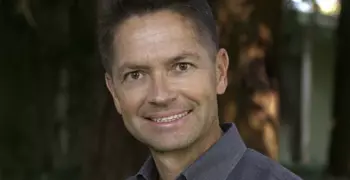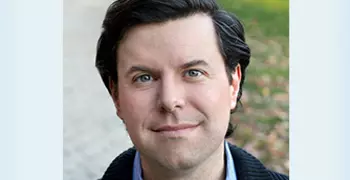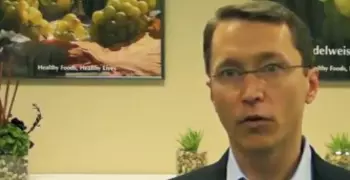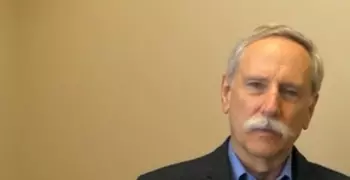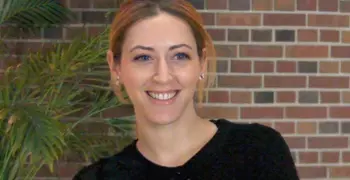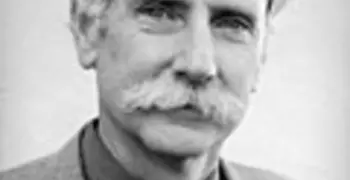Interview with Russell Targ

Russell Targ, a physicist and author, is a pioneer in the development of the laser and laser applications, and a co-founder of Stanford Research Institute’s investigations into psychic abilities (remote viewing) during the 1970s and ‘80s. Targ’s most recent published works include “The End of Suffering: Fearless Living in Troubled Times,” and “Limitless Mind: A Guide to Remote Viewing and Transformation of Consciousness.” Targ spoke on “The Scientific Implications of the Non-local Mind” presented by the Center for Spirituality and Healing Otto Schmidt Lecture Series on Anomalous Phenomenon.
Will you briefly describe your area of expertise?
Targ: I’m a physicist and did graduate work at Columbia University in New York. I worked for many years in laser technology and the development of the laser and I’m known for early work in laser research.
Then in 1972 I had the idea that I could teach people to explore the part of themselves that’s psychic, and because I had some experience in that arena I was able to go to the CIA and convince them that they should support a program at Stanford Research Institute in which we would explore psychic abilities and pursue applications of interest to the CIA for national security purposes. They said ‘If you can do a demonstration of ability test for us indicating that this is not all nonsense, that is if you can describe one of our locations of interest in the Soviet Union given the coordinates, then we’ll support your program.’
We worked with a psychic police commissioner in the city of Burbank, Pat Price, and he gave a superlative written and graphic rendition of this R&D site in eastern Siberia. He drew the buildings, drew a picture of a large gantry crane and described what the Russians were building inside a research building and that was all entirely correct. That led to another 20 years of financial support from 1972 until 1995.
We were run mainly by three physicists -- Ed May, a nuclear scientist, and Hal Putoff and myself, who are both laser physicists. Our teacher was Ingo Swann who was a New York artist and well known psychic. Swann taught Hal and me how to do remote viewing.
Hal and I then taught six people from Army intelligence at Fort Mead, Virginia, how to do remote viewing and they taught the world. It was a secret program at RSI but it’s not a secret any more. In fact, it is a cottage industry because remote viewing is so easy to teach. As soon as people learn to do remote viewing they want to set up classes and teach it to other people. People are very excited about learning that they can quiet their mind, and look into the distance and look into the future.
You talk about the non-local mind or non-local awareness. Can you explain what that is?
Targ: Non-locality is a description of the space-time we live in which under certain conditions twin particles and twin people have much more connectivity that you would think they have. The Buddhists say the separation is an illusion. There are many bodies and one consciousness would be the metaphysical interpretation. In quantum mechanics we say the emission of two photons or two elementary particles from a common source are entangled even though they travel away from one other at the speed of light. If you grab one of them, the other one shows the effect of that. Einstein’s special relativity said that things traveling away from each other at the speed of light are disconnected and there’s no way to communicate between them so the idea that non-local connections permit such a connection between the elementary particles contradicts special relativity. General relatively pertains to gravity and has nothing to do with this. Special relativity pertains to the connection between things traveling at the speed of light and the nature of space-time. This has now been well demonstrated. David Baum, one of the pioneers in modern quantum mechanics, called this quantum interconnectedness. Henry Stapp, who is chair of the physics department at UC-Berkley, said that non-locality may be the most important discovery in all of science because it shows that we misperceive the world we live in.
In psychic research -- parapsychology -- we say that minds are entangled to one another. In my book “Limitless Mind” I explore the relationship of quantum non-locality to what we see in remote viewing where psychic abilities are independent of space and time. Increasingly, target distance between a viewer and the thing he is looking at doesn’t degrade the ability.
It’s no harder to describe a building in Moscow than a building across the street from where you’re sitting. We spent an entertaining afternoon in California describing the inside of Brezhnev’s office in the Kremlin with great detail. No problem doing that. We similarly could describe people hiding in a park across the street, and the Brezhnev description was actually better. So increasing the distance by thousands of times doesn’t interfere with psychic functioning.
Similarly, we can describe with great accuracy events that are going to happen in the next few days just as well as things that are happening contemporaneously.
How do you find that state of non-local awareness?
Targ: You have to find the off switch in order to do remote viewing. This was all understood 2,500 years ago. Patanjali (a Hindu sage), a hundred years before Christ, wrote that in order to see into the distance and see into the future you have to quiet the ripples in your brain waves. He said you could then see into the distance, see into the future, heal the sick, and diagnose illnesses, all of which are being done presently.
The teaching of remote viewing is principally giving people permission to do it. Society says it’s nonsense, there is no such thing. What the remote viewing teacher has to do is use his conviction to convince a person to suspend their disbelief, quiet their mind, and describe their mental impressions of whatever the remote viewing teacher is offering as a hidden target. People quickly learn to separate out their mental noise -- the memory, imagination and analysis -- from the information that’s surprising and unfamiliar looking in order to do remote viewing. People can learn to do this in an afternoon. And after that it’s all practice. I describe learning to do remote viewing like riding a unicycle. It doesn’t make sense, and then someone will spend an hour with you and then off you go. It goes from impossible to easy.
How does modern physics relate to the concept of a non-local mind?
Targ: The idea of a non-local space is a hot issue in modern physics. From 1927 when Erwin Shrödinger first talked about entangled photons, until about 1970 when Freedman and Clauser demonstrated it, non-locality seemed principally like a crazy idea. It was one of many weird things in quantum mechanics. And then Freedman and Clauser in ‘70 demonstrated that it was true, that you could unmistakably measure it in the laboratory. So many people realized Einstein was wrong. Even though this looked like ‘a spooky connection in the distance’ it existed nonetheless. Since then it’s become quite interesting. Aspey in France demonstrated it on a larger space than Freedman and Clauser and Nicholas Gisin in Geneva has done it repeatedly over 10s of kilometers so it’s no longer a controversial issue. And people are interested in entangled photons and what they can do with them. The whole issue of entanglement has gotten quite interesting.
If I understand correctly, you see distant healing as a manifestation of the non-local mind. Can you talk briefly about some of the evidence you have seen for distant healing?
Targ: My daughter was a very significant investigator of distant healing. My daughter, Elizabeth Targ, was a California Pacific Medical Center psychiatrist. She died in 2002 at an early age. She’d done an experiment where she had 60 men with AIDS divided in two groups, and had very experienced healers from across the country, all sorts of healers of great experience, praying for 30 of the men. It was a double-blind experiment, none of the men knew whether they were in the prayed for group or not. The 30 men who received the prayers had fewer opportunistic illnesses, fewer trips to the hospital, better mental report of how they felt and altogether a significant difference between themselves and the people who received no prayers. It was a very strong finding published in the Western Medical Journal and has given rise to several additional NIH studies in distant healing.
Can anyone learn to experience expanded awareness? How?
Targ: Anyone can learn to do remote viewing. Remote viewing is like a musical ability. Anyone can learn to play the piano somewhat but it won’t necessarily get you to Carnegie Hall even with practice. It requires talent. Similarly, anyone can learn to do remote viewing to some degree. You can learn the intellectual ability to separate the psychic signal from the mental noise. Some people learn to do it a lot better than others and they stay good at it. It’s a matter of intention, your ability to quiet your mind and focus your attention.
When we are able to focus our attention and quiet our minds can we affect our own healing?
Targ: I don’t know. My experience is that healers tend not to be particularly healthy people, sorry to say. What I believe is that in order to be a healer you have to be able to focus your attention and dispassionately quiet your mind to send unconditional love and healing intentionality to the other person and I think it’s hard to do that for yourself.
What is going to be your future area of study?
Targ: I’m interested in pre-cognition. I’m interested to understand the extent to which we can investigate how the future affects the past. It shows that we profoundly misunderstand causality.













